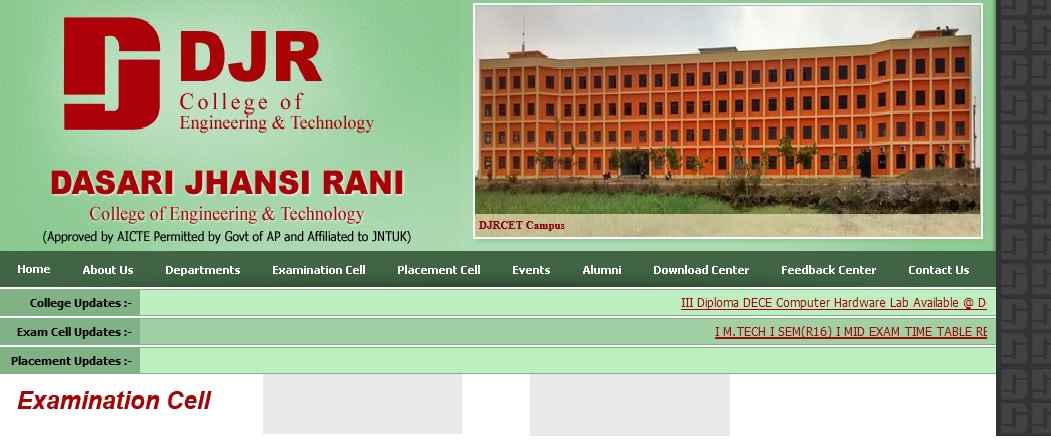RR320403 Electronic Measurements And Instrumentation B.Tech Question Paper : djriet.edu.in
Name of the College : Dasari Jhansi Rani Institute Of Engineering And Technology
University : JNTUK
Department : Electronics & Communication Engineering
Subject Code/Name : RR320403 – Electronic Measurements And Instrumentation
Year : 2008
Degree : B.Tech
Year/Sem : III/II
Website : djriet.edu.in
Document Type : Model Question Paper
Download Model Question Paper :
III Year II Sem Regular Apr/May 2008 : https://www.pdfquestion.in/uploads/djriet.edu.in/3023-RR320403-ELECTRONIC-MEASUREMENTS–AND–INSTRUMENTATION.pdf
III Year Supple Aug/Sep 2008 : https://www.pdfquestion.in/uploads/djriet.edu.in/3023_RR320403-ELECTRONIC-MEASUREMENTS–AND–INSTRUMENTATION.pdf
Electronic Measurements & Instrumentation Question Paper
III B.Tech II Semester Supplimentary Examinations, Apr/May 2008 :
ELECTRONIC MEASUREMENTS AND INSTRUMENTATION :
( Common to Electronics & Communication Engineering and Electronics & Telematics)
Time: 3 hours
Max Marks: 80
Answer any FIVE Questions :
Related : Noorul Islam College of Engineering R05410405 Micro Controllers And Applications B.Tech Question Paper : www.pdfquestion.in/3005.html
Set – I
All Questions carry equal marks :
1. (a) What are the advantages of an Aryton shunt Ammeter over a multirange Ammeter?
(b) What is a thermocouple? Explain the Construction and working of a thermocouple measuring Instrument with its range of measurement. [6+10]
2. (a) Discuss the bridge which is used for the precision measurement of capacitors and their insulating properties. How does the balancing conditions help in finding the reactance of the unknown component and its dissipation factor.
(b) A bridge has 2000 ohm in one arm and its opposite arm has a capacitor of value 0.5µF The arm to the right of resistor arm is having 1000 ohm in shunt with a 0.5 µF The arm opposite to this arm is connected with the unknown component. Find the value of the component and its dissipation factor. [8+8]

3. (a) Why is Wagner’s additional ground connection made?
(b) Why does not this connection affect the balance conditions?
(c) What are problems associated with shielding? How they are handled.[5+5+6]
4. (a) What is distortion. Explain different types of distortion.
(b) Explain about Harmonic Analyzer. [8+8]
5. (a) An input pulse Vi of 5 ns duration is applied to the basic sweep circuit using R and C at the instant Vo reaches 4.76V. What is the voltage across the capacitor after 50 µ s if the saturated transistor presents a resistance of 0.2kohms to the circuit?
(b) A trigger pulse is applied to the basic sweep using R and C for every 10 ms. Compute the amplitude of the voltage, V0, across the capacitor when the trigger pulse is applied. The values of Vcc = 50 V, R = 500 K , C = 0.2 µF.
(c) Discuss the relationship between the bandwidth and rise time in CRO. [6+5+5]
6. (a) Draw the block diagram of X-Y recorder and explain it. Give few examples of it. [3+5+2=10]
(b) What are the advantages of Magnetic tape recorders. [6]
7. (a) Where are piezoelectric transducers mainly used and why? [4]
(b) Give the equivalent circuit of a crystal and explain how a crystal is used as a transducer? [2+4=6]
(c) Explain the construction and working of strain gauge. [3+3=6]
8. (a) Show with an example, how the capacitive transducer has excellent frequency response? [8]
(b) What is temperature co-efficient of resistor? Explain in detail. [3+5=8]
Set – II
1. (a) Explain the basic principle of a digital voltmeter.
(b) Explain with the help of neat Circuit diagram, the working of a dual slope Digital voltmeter. [6+10]
2. Calculate the range of standard resistance in a Wheatstone bridge if:
(a) the unknown resistance is in the range of 1 -100kohm and the other two arms have each 10 kohm
(b) the unknown resistance is 10 kohm and arm opposite to the standard resistor is 1 kohm and the other arm has range of 2 -20 kohm
(c) Explain the use of Thevenin’s theorem in the analysis of Wheatstone bridge. [5+5+6]
3. With the aid of circuit diagrams and derivations, explain how effective resistance of series resonant circuit can be measured using:
(a) Resistance variation method and
(b) Reactance variation method. [8+8]
4. (a) If the internal time base of frequency counter is 10,000Hz, what frequency range is best measured by period measurement and what frequency is best measured by a conventional frequency measurement?
(b) What method can be used to increase the frequency range of a frequency counter? How can this be achieved without degrading the accuracy of the counter? [8+8]
5. Describe the following:
(a) Sources of Synchronisation.
(b) Blanking circuit
(c) Focus control. [5+6+5]
6. (a) Explain the two types of Spectrum Analyzers. [2×3=6]
(b) Explain the following terms associated with Spectrum Analyzer: [3×2=6]
i. Sensitivity
ii. Dynamic Range
iii. Harmonic Mixing.
(c) Compare the selectivity characteristics of the Spectrum Analyzer and Wave Analyzer. [4]
7. (a) Explain the equivalent circuit of piezoelectric crystal under conditions of load. [6]
(b) What are the uses of piezoelectric transducers? [5]
(c) Draw the experimental set up measuring force using piezoelectric crystal. [5]
8. (a) What is an LVDT? Where is it used? Explain its operating principle [2+2+4]
(b) What are linearity and sensitivity of resistance transducers? [8]